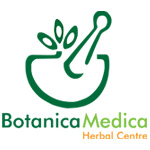
Clinically challenging, often complex, and frequently frustrating for women and their Practitioners, female hormonal imbalances are a familiar presence within the natural medicine clinic. Given the high prevalence of hormonal conditions,4 and coupled with perceptions of lack of understanding within the medical model, women are increasingly turning to natural medicine for solutions.
There’s More to Hormones Than the Hormones
Clinical management of female hormonal conditions traditionally includes manipulation of sex hormones, often based on serum or salivary hormone levels – however recent thinking expands this view. The field of intracrinology explains that considerable variability exists between hormone levels within serum and saliva, compared to those within the tissues (where hormone synthesis may also occur); shedding light on the limitations of targeting reproductive hormones based solely on test results.5 Further, serum hormone concentrations in women with endometriosis,6 fibroids,7 premenstrual syndrome (PMS)8 and menopause9 rarely differ from healthy controls, suggesting that hormone levels are just one piece of the hormonal puzzle.
An integrative approach includes also addressing the wide variety of mediators contributing to hormonal imbalance. These include hypothalamic-pituitary-adrenal (HPA) axis dysfunction due to chronic stress, inflammation (including mast cell activation), functioning of endocrine glands (e.g. thyroid, pancreas), the microbiome, excess fat mass, endocrine disrupting chemicals, and diet and lifestyle factors. With such an approach, greater clinical outcomes may be achieved. As a Practitioner, you are like the conductor of a grand symphony orchestra, gently influencing these factors to create hormonal harmony in your female patients.
An Alter Ego Named PMS
Hormonal imbalance can be relentless, with many women experiencing hormonal symptoms throughout their lifecycle. An alarming 50-80% of women experience PMS10 influenced by alterations in progesterone – likely due to levels being too low11 or declining suddenly (rather than steadily).12 While the pathophysiology of PMS remains unclear, symptoms are correlated with increased inflammation and oxidative stress, HPA axis alterations, epigenetics, and the environment; in addition to cyclic variations in steroid hormones and neurotransmitters.13 Instrumental in the management of PMS, Vitex agnus-castus (vitex) binds to dopamine-2 receptors (as well as opioid and oestrogen receptors), inhibiting prolactin production and supporting healthy progesterone function to improve mood and other PMS symptoms.14 With the addition of Withania somnifera (withania) to alleviate stress and anxiety,15 and zinc and vitamin E reducing oxidative stress,16 Vitex, Ginger and Withania to Increase Progesterone provides an integrative approach in the management of PMS.
Proliferation Pandemic – Endometriosis and Fibroids
Affecting many; 1 in 10 women have endometriosis,17 ,18 and 50% of females develop fibroids by the age of 50.19 Endometriosis is a chronic inflammatory disease characterised by the presence of endometrial-like tissue outside the uterus, which proliferates and becomes encapsulated by immune defence mechanisms to form inflammatory cysts and lesions, resulting in abdominal pain, scar tissue and adhesions.20 With both conditions driven by oestradiol (E2) excess,21 this fuels proliferation of fibroids in the myometrium.22 Soy isoflavones competitively antagonise receptors and block the binding of E2, thus reducing proliferation and inflammation.23 BCM-95™ Turmeric also reduces inflammation and aids induction of cellular glutathione levels, helping to detoxify quinones and oestrogens,24 while rosemary stimulates 2-hydroxylation of oestrogens, diverting oestrogen away from the (more proliferative) 4- and 16-hydroxylation pathways.25 Soy, Methylating Nutrients & BCM-95™ Turmeric to Clear Oestrogen modulates oestrogen metabolism and addresses some drivers of these troubling conditions.
Inflammation is a Common Theme in PCOS
From foetal development in utero to puberty, middle-age and beyond menopause – for some women, there may be no escaping from PCOS throughout life.26 Interestingly, research is now indicating that inflammation rather than hyperinsulinaemia, is the primary driver of this condition: low grade, chronic inflammation is thought to promote the hyperandrogenism and ovarian dysfunction which occurs in PCOS.27 Paeonia lactiflora (peony) and Glycyrhhiza glabra (liquorice) inhibit the production of testosterone synthesising enzymes within the ovary, and increase aromatase, helping to convert testosterone to oestrogen.28 Through these mechanisms, symptoms of PCOS may be alleviated, including hirsuitism, acne and infertility. In conjunction with anti-inflammatory agents, Inositol, Peony & Liquorice to Clear Testosterone can assist by reducing androgen levels and improving metabolic health.
Managing the Menopausal Transition
As a woman journeys towards mid-life, hot flushes are an often inescapable reminder of declining oestrogen levels.29 In menopause, there is a narrowing of the thermoneutral zone; even slight elevations in temperature can trigger the flushing response, as the hypothalamus perceives the body as being too hot. While low oestrogen is partially responsible, this response is also attributed to increased sympathetic nervous system activity in the hypothalamus.30 The traditional Chinese medicine combination, Rehmannia Six may be viewed as Oestrogen Lifting Herbs, enhancing the expression of aromatase in the nervous system and increasing oestrogen receptors, resulting in greater tissue synthesis and activity of oestrogen within the hypothalamus.31 This is combined with Ziziphus jujuba var. spinosa (zizyphus) to harmonise the hormonal orchestra and alleviate hot flushes, anxiety, insomnia and night sweats.
Magnificent Magnesium for all Women
Research shows that magnesium either alone, or in combination with vitamin B6 and/or calcium,32 aids in alleviating symptoms of mood, premenstrual migraine and dysmenorrhoea.33 Moreover, magnesium plays a critical role in oestrogen metabolism, as it is required for glucuronidation,34 and decreases the activity of β-glucuronidase35 and aromatase.36 With deficiency a significant driver of chronic low-grade inflammation that underpins so many conditions,37 Magnesium and Broccoli for Women’s Health is fundamental for all women to support female health.
Be the Conductor of the Hormonal Orchestra
Female hormonal conditions are orchestrated by multiple mediators in concert with subtle alterations in sex hormones. A comprehensive approach to treatment involves herbal and nutritional interventions that promote hormonal modulation, in addition to addressing the various drivers behind symptoms. Support your patients on their healing journey towards hormonal harmony.
References
Brosens I, Benagiano G. Clinical significance of neonatal menstruation. Eur J Obstet Gynecol Reprod Biol. 2016 Jan;196:57-9.
Younes JA, Lievens E, Hummelen R, van der Westen R, Reid G, Petrova MI. Women and their microbes: the unexpected friendship. Trends Microbiol. 2018 Jan;26(1):16-32.
Copp T, Jansen J, Doust J, Mol BW, Dokras A, McCaffery K. Are expanding disease definitions unnecessarily labelling women with polycystic ovary syndrome?. BMJ. 2017 Aug 16;358:j3694.
Bertone-Johnson ER. Chronic inflammation and premenstrual syndrome: a missing link found? J Womens Health (Larchmt). 2016 Sep;25(9):857-8. doi: 10.1089/jwh.2016.5937.
Labrie F, Labrie C. DHEA and intracrinology at menopause, a positive choice for evolution of the human species. Climacteric. 2013 Apr;16(2):205-13.
Huhtinen K, Desai R, Ståhle M, Salminen A, Handelsman DJ, Perheentupa A, et al. Endometrial and endometriotic concentrations of estrone and estradiol are determined by local metabolism rather than circulating levels. J Clin Endocrinol Metab. 2012 Nov;97(11):4228-35. doi: 10.1210/jc.2012-1154.
Van den Bosch T, Coosemans A, Morina M, Timmerman D, Amant F. Screening for uterine tumours. Best Pract Res Clin Obstet Gynaecol. 2012 Apr;26(2):257-66. doi: 10.1016/j.bpobgyn.2011.08.002.
Hofmeister S, Bodden S. Premenstrual syndrome and premenstrual dysphoric disorder. Am Fam Physician. 2016 Aug 1;94(3):236-40. Review. PMID: 27479626.
Labrie F, Labrie C. DHEA and intracrinology at menopause, a positive choice for evolution of the human species. Climacteric. 2013 Apr;16(2):205-13. doi: 10.3109/13697137.2012.733983.
Bertone-Johnson ER. Chronic inflammation and premenstrual syndrome: a missing link found? J Womens Health (Larchmt). 2016 Sep;25(9):857-8. doi: 10.1089/jwh.2016.5937.
Hashemi S, Ramezani Tehrani F, Mohammadi N, Rostami Dovom M, Torkestani F, et al. Comparison of metabolic and hormonal profiles of women with and without premenstrual syndrome: a community based cross-sectional study. Int J Endocrinol Metab. 2016;14(2):E28422. doi: 10.5812/ijem.28422.
Lovick TA, Guapo VG, Anselmo-Franci JA, Loureiro CM, Faleiros MCM, Del Ben CM, et al. A specific profile of luteal phase progesterone is associated with the development of premenstrual symptoms. Psychoneuroendocrinology. 2017 Jan;75:83-90. doi: 10.1016/j.psyneuen.2016.10.024.
Siahbazi S, Behboudi-Gandevani S, Moghaddam-Banaem L, Montazeri A. Effect of zinc sulfate supplementation on premenstrual syndrome and health-related quality of life: Clinical randomized controlled trial. J Obstet Gynaecol Res. 2017 May;43(5):887-894. doi: 10.1111/jog.13299.
Heskes AM, Sundram TCM, Boughton BA, Jensen NB, Hansen NL, Crocoll C, et al. Biosynthesis of bioactive diterpenoids in the medicinal plant Vitex agnus-castus. Plant J. 2018 Mar;93(5):943-958. doi: 10.1111/tpj.13822.
Chandrasekhar K, Kapoor J, Anishetty S. A prospective, randomized double-blind, placebo-controlled study of safety and efficacy of a high-concentration full-spectrum extract of ashwagandha root in reducing stress and anxiety in adults. Indian J Psychol Med. 2012 Jul;34(3):255-62. doi: 10.4103/0253-7176.106022.
Andrews MA, Schliep KC, Wactawski-Wende J, Stanford JB, Zarek SM, Radin RG, et al. Dietary factors and luteal phase deficiency in healthy eumenorrheic women. Hum Reprod. 2015 Aug;30(8):1942-51. doi: 10.1093/humrep/dev133.
Eisenberg VH, Weil C, Chodick G, Shalev V. Epidemiology of endometriosis: a large population-based database study from a healthcare provider with 2 million members. BJOG. 2018 Jan;125(1):55-62. doi: 10.1111/1471-0528.14711.
Hummelshoj L. Endometriosis: an old problem without a current solution. Acta Obstet Gynecol Scand. 2017 Jun;96(6):779-782 doi: 10.1111/aogs.13075.
Women’s Health Queensland. Fibroids: Fast facts. [Internet]. Fortitude Valley, QLD: Women’s Health Queensland Wide Inc. Joanna Egan. [updated 2012 December; cited 2018 June 20]. Available from: https://womhealth.org.au/conditions-and-treatments/fibroids-fast-facts.
Hummelshoj L. Endometriosis: an old problem without a current solution. Acta Obstet Gynecol Scand. 2017 Jun;96(6):779-782. doi: 10.1111/aogs.13075.
Moravek MB, Yin P, Ono M, Coon JS 5th, Dyson MT, Navarro A, et al. Ovarian steroids, stem cells and uterine leiomyoma: therapeutic implications. Hum Reprod Update. 2015;21(1):1-12. doi: 10.1093/humupd/dmu048.
Moravek MB, Yin P, Ono M, Coon JS 5th, Dyson MT, Navarro A, et al. Ovarian steroids, stem cells and uterine leiomyoma: therapeutic implications. Hum Reprod Update. 2015;21(1):1-12. doi: 10.1093/humupd/dmu048.
Evans M, Elliott JG, Sharma P, Berman R, Guthrie N. The effect of synthetic genistein on menopause symptom management in healthy postmenopausal women: a multi-center, randomized, placebo-controlled study. Maturitas. 2011 Feb;68(2):189-96.
Calaf GM, Echiburú-Chau C, Wen G, Balajee AS, Roy D. Effect of curcumin on irradiated and oestrogen-transformed human breast cell lines. Int J Oncol. 2012 Feb;40(2):436-42. doi: 10.3892/ijo.2011.1228.
Debersac P, Heydel JM, Amiot MJ, Goudonnet H, Artur Y, Suschetet M, et al. Induction of cytochrome P450 and/or detoxification enzymes by various extracts of rosemary: description of specific patterns. Food Chem Toxicol. 2001 Sep;39(9):907-18. PMID: 11498267.
Rosenfield RL, Ehrmann DA. The pathogenesis of polycystic ovary syndrome (PCOS): the hypothesis of PCOS as functional ovarian hyperandrogenism revisited. Endocr Rev. 2016 Oct;37(5):467-520. doi: 10.1210/er.2015-1104.
González F. Nutrient-induced inflammation in polycystic ovary syndrome: role in the development of metabolic aberration and ovarian dysfunction. Semin Reprod Med. 2015 Jul;33(4):276-86. doi: 10.1055/s-0035-1554918.
Takeuchi T, Nishii O, Okamura T, Yaginuma T. Effect of paeoniflorin, glycyrrhizin and glycyrrhetic acid on ovarian androgen production. Am J Chin Med. 1991;19(1):73-8. doi: 10.1142/S0192415X91000119.
Davis SR, Lambrinoudaki I, Lumsden M, Mishra GD, Pal L, Rees M, et al. Menopause. Nat Rev Dis Primers. 2015 Apr 23;1:15004.
Freedman RR. Menopausal hot flashes: mechanisms, endocrinology, treatment. J Steroid Biochem Mol Biol. 2014 Jul;142:115-20. doi: 10.1016/j.jsbmb.2013.08.010.
Zhou W, Cheng X, Zhang Y. Effect of Liuwei Dihuang decoction, a traditional Chinese medicinal prescription, on the neuroendocrine immunomodulation network. Pharmacol Ther. 2016 Jun;162:170-8. doi: 10.1016/j.pharmthera.2016.02.004.
Charandabi SM, Mirghafourvand M, Nezamivand-Chegini S, Javadzadeh Y. Calcium with and without magnesium for primary dysmenorrhea: a double-blind randomised placebo-controlled trial. Int J Women’s Health & Repro Sci. 2017 Oct 1;5(4):332-8. Doi: 10.15296/ijwhr.2017.56.
Parazzini F, Di Martino M, Pellegrino P. Magnesium in the gynaecological practice: a literature review. Magnes Res. 2017 Feb 1;30(1):1-7. doi: 10.1684/mrh.2017.0419.
Brown RC, Bidlack WR. Dietary magnesium depletion: p-nitroanisole metabolism and glucuronidation in rat hepatocytes and hepatic microsomal membranes. Proc Soc Exp Biol Med. 1991 May;197(1):85-90. PMID: 1902295.
Maruti SS, Li L, Chang JL, Prunty J, Schwarz Y, Li SS, et al. Dietary and demographic correlates of serum beta-glucuronidase activity. Nutr Cancer. 2010;62(2):208-19. doi: 10.1080/01635580903305375.
Balthazart J, Baillien M, Charlier TD, Cornil CA, Ball GF. Multiple mechanisms control brain aromatase activity at the genomic and non-genomic level. J Steroid Biochem Mol Biol. 2003 Sep;86(3-5):367-79. PMID: 14623533.
Nielsen FH. Magnesium deficiency and increased inflammation: current perspectives. Jnl Inflam Res. 2018;11:25-34. doi: 10.2147/JIR.S136742.
Image coutesy of Leio Mclaren

Recent Comments